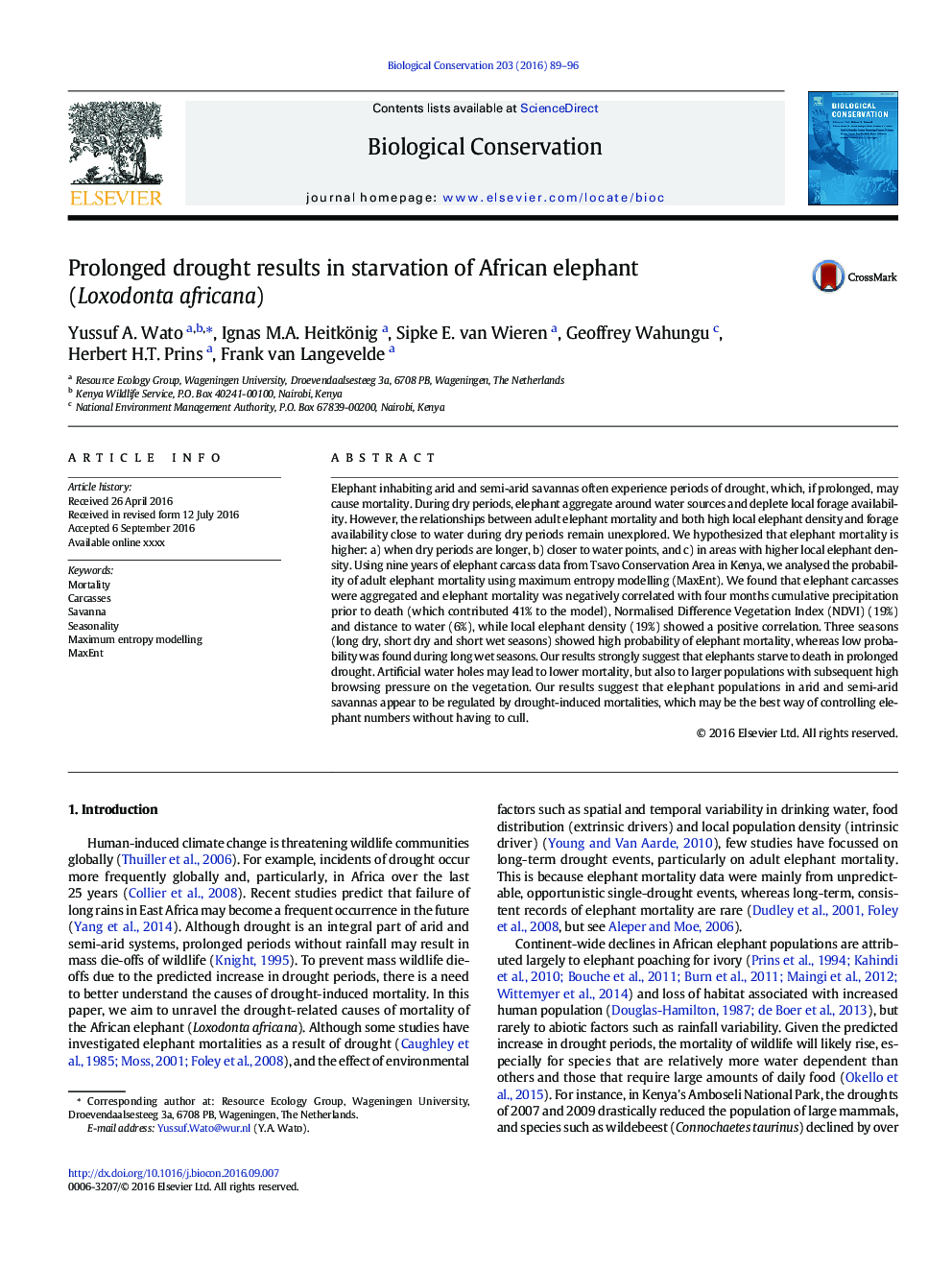| Article ID | Journal | Published Year | Pages | File Type |
|---|---|---|---|---|
| 6298061 | Biological Conservation | 2016 | 8 Pages |
Abstract
Elephant inhabiting arid and semi-arid savannas often experience periods of drought, which, if prolonged, may cause mortality. During dry periods, elephant aggregate around water sources and deplete local forage availability. However, the relationships between adult elephant mortality and both high local elephant density and forage availability close to water during dry periods remain unexplored. We hypothesized that elephant mortality is higher: a) when dry periods are longer, b) closer to water points, and c) in areas with higher local elephant density. Using nine years of elephant carcass data from Tsavo Conservation Area in Kenya, we analysed the probability of adult elephant mortality using maximum entropy modelling (MaxEnt). We found that elephant carcasses were aggregated and elephant mortality was negatively correlated with four months cumulative precipitation prior to death (which contributed 41% to the model), Normalised Difference Vegetation Index (NDVI) (19%) and distance to water (6%), while local elephant density (19%) showed a positive correlation. Three seasons (long dry, short dry and short wet seasons) showed high probability of elephant mortality, whereas low probability was found during long wet seasons. Our results strongly suggest that elephants starve to death in prolonged drought. Artificial water holes may lead to lower mortality, but also to larger populations with subsequent high browsing pressure on the vegetation. Our results suggest that elephant populations in arid and semi-arid savannas appear to be regulated by drought-induced mortalities, which may be the best way of controlling elephant numbers without having to cull.
Related Topics
Life Sciences
Agricultural and Biological Sciences
Ecology, Evolution, Behavior and Systematics
Authors
Yussuf A. Wato, Ignas M.A. Heitkönig, Sipke E. van Wieren, Geoffrey Wahungu, Herbert H.T. Prins, Frank van Langevelde,
